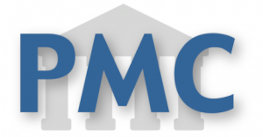Dokumentdetails
ID
oai:pubmedcentral.nih.gov:1083...
Thema
ArticlesAutor
Rodriguez-Wallberg, Kenny A. Kieler, Helle Foukakis, Theodoros Li, Jiong Gissler, Mika Oberg, Anna Sara Bergh, Jonas Lundberg, Frida E.Langue
enEditor
Elsevier
Kategorie
EClinicalMedicine
Jahr
2023
Auflistungsdatum
07.02.2024
Schlüsselwörter
rates post-cancer diagnosed study associated nc register infertility dnr cancer 95% co-treatment ahr ci childbirth womenZusammenfassung
BACKGROUND: Worldwide, an increasing number of women with cancer are receiving Gonadotropin Releasing Hormone agonist (GnRHa) co-treatment during chemotherapy aiming at ovarian protection.
There is divergence among guidelines, and some have recommended GnRHa co-treatment for women with breast cancer, however, the effect of GnRHa on future fertility is uncertain.
METHODS: In this population-based cohort study we included all women diagnosed with cancer at ages 15–45 between July 2005 and March 2017 in Sweden, identified in the Swedish Cancer Register.
Exposure to GnRHa co-treatment was captured using the Prescribed Drug Register.
Post-cancer childbirth, extracted from the Medical Birth Register, was the main outcome.
Secondary outcomes included childbirths achieved through natural conception (NC), infertility diagnosis and cancer mortality.
For each outcome, adjusted hazard ratios (aHR) and 95% confidence intervals (CI) were estimated using delayed-entry Cox models, stratified by age and cancer site.
FINDINGS: Among 24,922 women diagnosed with cancer, 1.5% had GnRHa co-treatment.
Breast cancer diagnoses were found in 80.2% of GnRHa exposed women and the GnRHa exposure was not associated with higher rates of childbirth (aHR 1.23, 95% CI 0.80–1.89), or NC childbirth (aHR 1.02, 95% CI 0.62–1.67), whereas the rate of infertility was significantly higher (aHR 2.42, 95% CI 1.44–4.08).
In women with lymphoma and other cancers, GnRHa exposure was not associated with higher rates of childbirth, NC childbirth or infertility.
GnRHa exposure was not associated with higher cancer mortality for any cancer type.
INTERPRETATION: We did not find evidence of improved or maintained fertility, estimated as childbirth rates post-cancer, in women who received GnRHa during cancer treatment.
FUNDING: This study was financed by research grants from The 10.13039/501100002794Swedish Cancer Society (CAN 2017/704; 190249Pj, 200170F), The 10.13039/501100004359Swedish Research Council (Dnr 2019-00446), the Nordic Cancer Union NCU (Grant 2017), The Swedish Childhood Cancer Fund (KP2016-0031), 10.13039/501100007232Radiumhemmets Forskningsfonder (Dnr: 201313), 10.13039/501100004348Stockholm County Council (FoUI-953912) and 10.13039/501100004047Karolinska Institutet (Dnr 2020-01963).
Rodriguez-Wallberg, Kenny A.,Kieler, Helle,Foukakis, Theodoros,Li, Jiong,Gissler, Mika,Oberg, Anna Sara,Bergh, Jonas,Lundberg, Frida E., 2023, Gonadotropin Releasing Hormone agonist (GnRHa) during chemotherapy and post-cancer childbirths – a Nationwide population-based cohort study of 24,922 women diagnosed with cancer in Sweden, Elsevier

VR-Splatting: Foveated Radiance Field Rendering via 3D Gaussian Splatting and Neural Points
computer demands rendering neural
Attractor-Like Dynamics Extracted from Human Electrocorticographic Recordings Underlie Computational Principles of Auditory Bistable Perception
low-dimensional ecog subjects neural features dynamics perception

